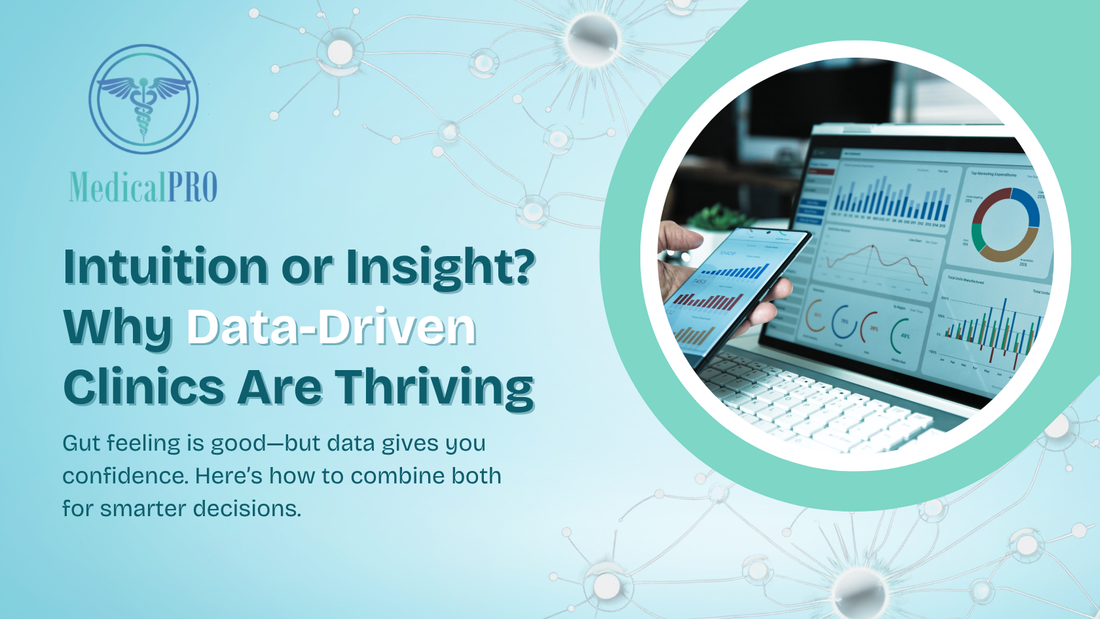Gut feeling is good—but data gives you confidence. Here’s how to combine both for smarter decisions.
The Doctor’s Dilemma: “I Know What Feels Right—But Is It Working?”
Dr. Arif runs a general practice. He’s experienced, sharp, and trusted by generations of patients. He doesn’t need a report to know when flu season is coming or when his regulars will drop by.
But when his junior staff asked, “Which services are actually bringing in the most revenue?”—he paused.
He thought it was physical exams and vaccinations. But when they reviewed three months of clinic data, it turned out minor procedures and skin consultations were quietly leading the numbers.
Dr. Arif wasn’t wrong—his instincts were built over time. But he was missing out on hidden opportunities. That’s when he realized: gut feeling needs data to back it up.
Post-Pandemic Clinics Need More Than Experience
Today’s clinic owners in the Philippines and Indonesia face a different world than a decade ago:
- Rising operational costs
- Patient expectations for transparency and digital convenience
- Staff turnover and burnout
- Intense competition—even among neighborhood clinics
In this new reality, relying on “what feels right” isn’t enough. You need to make confident, clear decisions—and data helps you get there.
Why Data-Driven Doesn’t Mean Cold and Robotic
Let’s bust a myth: being data-driven doesn’t mean becoming a robot.
It means using facts to guide your human instincts.
Just like a stethoscope amplifies what your ears hear, dashboards and reports enhance what your mind senses.
Here’s what it looks like in practice:
- You feel like the front desk is overwhelmed → Data shows patient wait time averages 27 minutes → You adjust scheduling.
- You sense no-shows are increasing → Reports confirm a 15% jump in missed appointments → You implement SMS reminders.
- You believe patients are more satisfied since hiring a new nurse → Surveys show satisfaction scores are up 20%.
Data doesn’t replace your intuition—it sharpens it.
5 Ways Data Helps Clinics Thrive
Let’s break this down into everyday wins you can actually see:
1. Better Scheduling
Track peak hours and adjust shifts so your staff isn’t overwhelmed during crunch times—or idle in slow hours.
2. More Profitable Services
Find out which consultations or procedures bring in the most income. Focus marketing and promotions on what works.
3. Fewer No-Shows
See which appointment types or time slots have the highest missed rates. Automate reminders based on trends.
4. Smarter Inventory
Track what medicines or supplies are overstocked or underused. Avoid expiry waste or sudden shortages.
5. Real Patient Feedback
Go beyond hearsay. Use post-visit surveys or net promoter scores to identify patient pain points—or positive experiences to build on.
Common Myths That Keep Clinics Stuck
Many clinics hesitate to adopt data because of these fears:
“We’re too small for analytics.”
Even a solo clinic generates actionable data—like consultation counts, billing totals, and patient satisfaction.
“Data is expensive and complicated.”
Modern SaaS like MedicalPro is designed to be plug-and-play. You don’t need an IT team—just the right partner.
“I don’t have time to learn all this.”
You don’t need to analyze raw numbers. Smart dashboards already summarize what matters.
The Hybrid Power of Insight + Instinct
Let’s say you’re choosing whether to expand your dental services or offer wellness packages.
- Your gut says more patients are asking about whitening and cleaning.
- Your data shows these bring 25% higher revenue per visit and have better repeat rates.
Together, that’s a solid decision.
Insight + instinct = leadership.
What Data Looks Like in a Southeast Asian Clinic
At a pediatric clinic in Makati, the owner started tracking follow-up rates through her EMR. She discovered that nearly 30% of children treated for asthma weren’t returning for reviews—because their parents didn’t receive reminders.
They added a simple SMS automation, and within three months, follow-up rates improved by 40%. That meant better care for kids—and better income stability for the clinic.
This is not tech for tech’s sake. It’s data solving real problems.
Don’t Let Data Overwhelm You—Start Small
If you’re not used to tracking metrics, start here:
- Total consults per week
- Revenue by service type
- Top 5 reasons patients visit
- No-show rate
- Billing collection rate
Even tracking just these gives you a clearer picture than guessing.
Final Thought: Instinct Built Your Practice. Insight Will Grow It.
Your instincts got you this far—and that’s no small feat. But in 2025 and beyond, growing your clinic means pairing those instincts with insight.
That’s how the best clinics in PH and Indonesia are staying ahead—not by chasing trends, but by leading with clarity.
Need help making sense of your clinic data?
Let MedicalPro show you how to turn your numbers into action. Let’s make smarter decisions together—one insight at a time.







